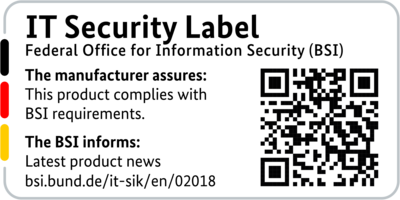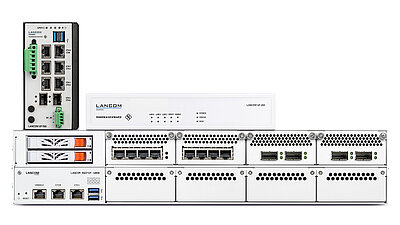By definition, network security describes the technical and organizational protection of the internal IT infrastructure with all its data, systems, devices, and applications to enable secure digitalization. These security mechanisms not only protect the data center, but also all locations and the cloud itself. Effective network security fends off unauthorized access, data manipulation or data theft with blackmail, system paralysis (DDoS attacks), and other damage caused by hackers, malware, and viruses.
It ensures that data is exchanged confidentially and with integrity and is always available via VPN (Virtual Private Networks) or ZTNA (Zero Trust Network Access). However, secure networks are created primarily through comprehensive information on network security and network protection, as well as targeted measures to enforce cyber protection policies at all levels. The best way to get started right now is with LANCOM insider knowledge on the subject of network security!
What does modern and secure IT at the network edge look like?
With secure edge computing, computing power and security applications move directly to where data is generated – at the edge of the network. Local firewalls with industry-specific applications ensure secure, sovereign, and real-time data processing.

Secure admin user management via an identity provider
LMC now supports direct login through your company's identity provider (IdP). After entering their e-mail address in LMC, admin users are automatically redirected to the IdP and authenticated there as part of the existing single sign-on process – without having to re-enter a password in the LMC. This enables all admin user accounts to be managed centrally within a unified identity management system. It also makes onboarding and offboarding new LMC administrators more secure while significantly reducing operational effort. At the same time, it strengthens your company’s long-term security and ensures compliance with key access control regulations, such as required for meeting some of the NIS 2 regulations on network and information security.
The IdP can be configured in LMC via the “Management” menu under the “External admin user management” tab.
LANCOM products bearing the BSI IT security label – because security is not merely a promise, but a standard
What is the IT security label?
With the introduction of the IT Security Act 2.0, the German Federal Office for Information Security (BSI) launched a voluntary IT security label. This label is designed to clearly identify security-relevant features of internet-enabled products and digital services. Manufacturers can voluntarily label their products to demonstrate that certain security functions are reliably guaranteed.
What motivated us to pursue this voluntary label?
“We chose to label our devices with the IT security label because security truly matters to us. The IT security label represents values that are a matter of course for us at LANCOM.”
Dr. Martin Krebs, Vice President Router & Gateways, LANCOM Systems
LANCOM Products with BSI label























